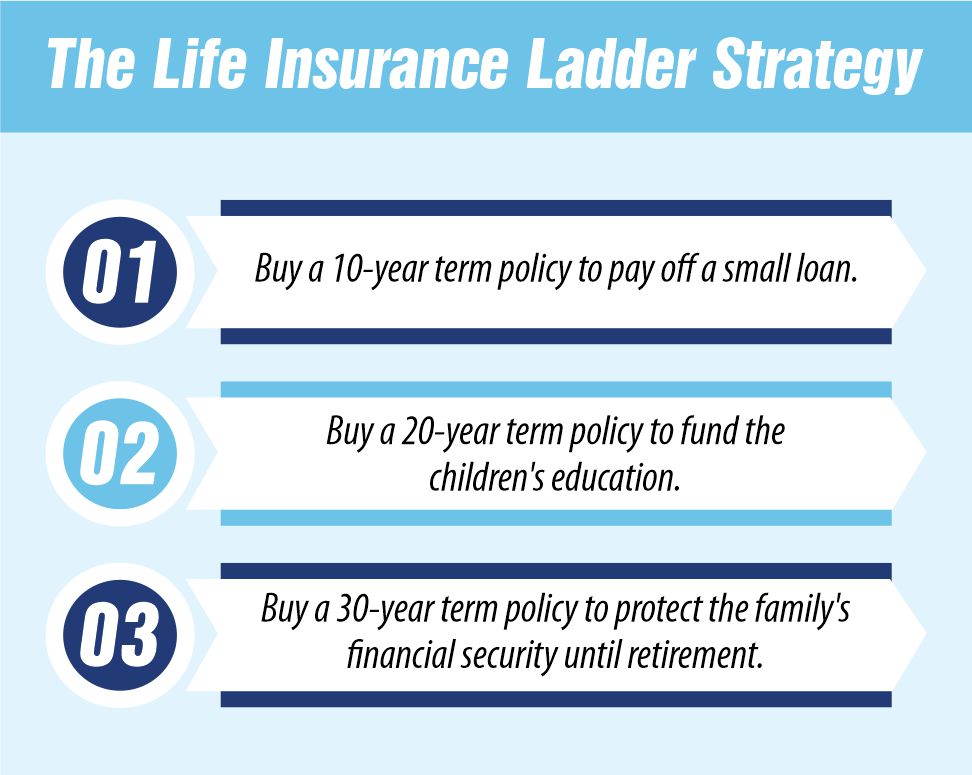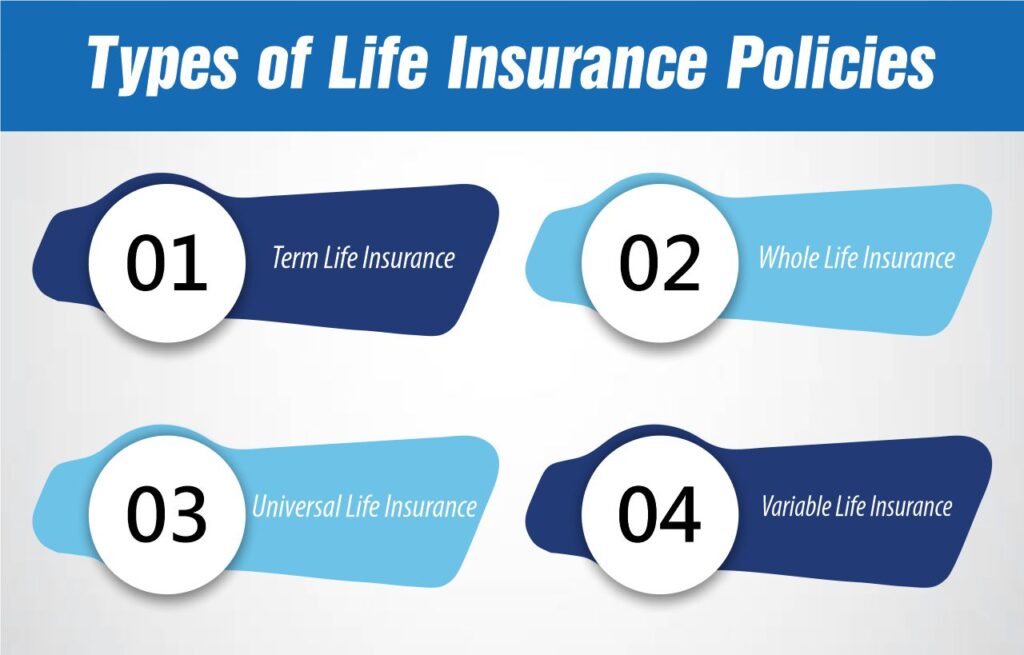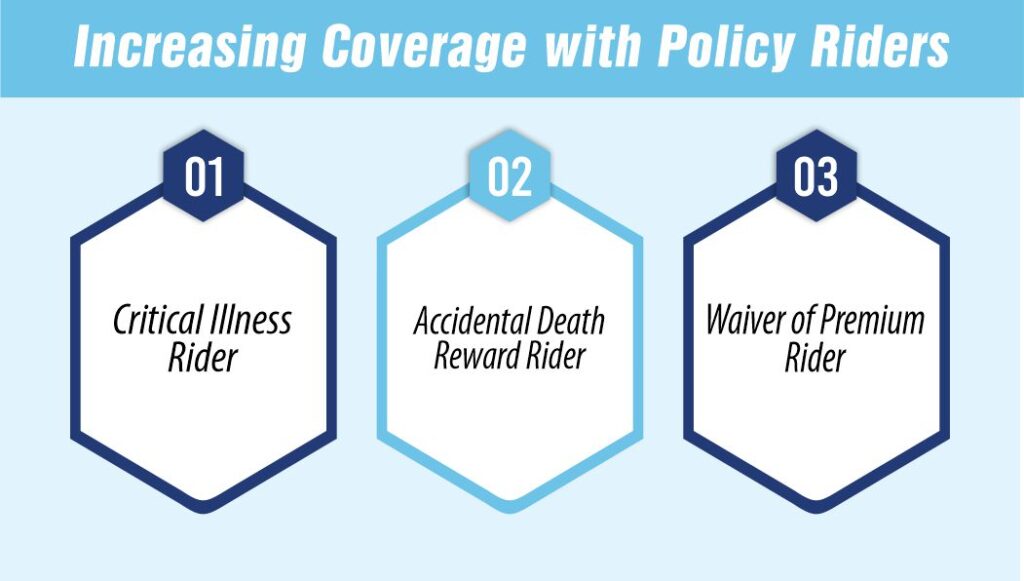Of course, Can You Have Multiple Life Insurance Policies? In this way, it becomes possible to choose preferences in insurance depending upon certain financial options or situations in life. For example, one policy may serve to shield your family in the event of an unfavorable turn of events, and another policy may be focused on safeguarding your mortgage, or to stabilize your business. You may have three policies instead of one because it makes business sense to have multiple policies when circumstances call for it.
When Is It Appropriate to Hold Several Life Insurance Policies?
It will help put money aside for that rainy day and provide for your family and everybody who depends on you if anything happens to you. Most individuals prefer to have one life policy but sometimes it is more advantageous to have more than one life insurance policy. Here are some scenarios where this approach may make sense:
Life Changes and Growing Responsibilities
Effects and impacts an an increase in costs and expenses in a person’s life occur when they undergoing major life transitions. Major life events such as purchasing a house, having children, or beginning a company can be influential affordably. In such instances, multiple policies are of help in addressing several requirements of an individual. For instance you can use the term insurance to pay off a mortgage or business loan and at the same time use a permanent insurance policy to support your family in the future. This system means that no particular financial risk is left uncovered, without becoming overly concentrated in a single policy.
Cost-Effective Coverage
Rather than buying one policy that covers all the areas in one stock, it may be cheaper to buy various sub-policies that will provide coverage for various areas in the stock. Both types of policies are quite distinct from each other and many a times they also have differential premium rates. When policies are that way overlapped, a company can get optimal coverage without paying for the unwanted add-ons within one policy.
Addressing Inadequate Coverage
As time passes by you may realize that the policy you once bought may not be enough for your current stage of life. If your previous policy is insufficient to accommodate the changes in your needs resulting from a higher income or larger debts or perhaps a growing family, then the addition of another policy can help fill the void. It also lets you improve your coverage without necessarily switching the first policy you bought; this can prove economical as far as premiums are concerned.
Flexibility for Changing Circumstances
Another advantage is that the ability to have multiple policies makes a certain amount of sense as life goes on and changes. At some point, you may decide to cut down on one area while adding it to another. For example, you can surrender a term policy once a mortgage has been repaid while retaining a permanent policy for other, longer-term requirements. It also makes it possible for you to change your coverage to suit the current situation because you are not limited by the structure of the policies offered.
How Term and Permanent Life Insurance Policies Work
It is arguably the only instrument that can be used for financial planning and if a need is to be articulated, several types of policies should be distinguished between term and permanent policies. One type is highly specialized and the other provides more general coverage of events, and using both may offer a complete picture.
Term Life Insurance: Affordable and Focused on Short-Term Needs
Term life insurance is a very simple type of coverage in effect for 10, 20, or 30 years. It’s often a choice made because of affordability and simplicity. General things about term insurance are that the premiums are generally lower than permanent policies and are ideal for temporary coverage needs.
This kind of insurance helps address time-sensitive financial responsibilities. This means that you may use a term policy to cover your mortgage, fund your children’s education, or supplement your income during your family’s time of becoming financially stable. Once the term ends, the coverage stops unless renewed or converted, often with increased premiums. Term life insurance is an economical way to provide protection at pivotal moments during your life.
Permanent Life Insurance: Lifelong Coverage with Added Benefits
Permanent life insurance, on the other hand, guarantees protection for your entire lifetime with premium payments. Although this is more costly than term life insurance, it offers extra options that provide value beyond the basic payout in the event of the insured’s death. One of its main features is the cash value: that portion of your paid-premiums which grows in value over time, can be pledged against, and in some conditions can be withdrawn.
Permanent policies often come in handy for long-term financial planning, for example, when planning an estate, creating an inheritance, or covering final expenses. They are also suitable for those who desire guaranteed lifetime protection and the ability to build a financial asset over time. Although the cost upfront is higher, the benefits can last for a very long time, especially if you and your family feel better at peace.

The Life Insurance Ladder Strategy
One of the popular techniques is the Life Insurance Ladder Strategy: buy several term life policies with different terms. This strategy just steps in line with your changing financial responsibilities.
You could:
- Buy a 10-year term policy to pay off a small loan.
- Buy a 20-year term policy to fund the children’s education.
- Buy a 30-year term policy to protect the family’s financial security until retirement.
But as your financial responsibilities decrease—such as paying off loans or the kids become financially independent—you can let shorter-term policies lapse, ensuring you are only paying for coverage you still need.
Business Protection
Usually, business owners require several policies to protect their business. Take a business loan as one example, another may be used to protect a partnership agreement by way of a buy-sell arrangement that would ensure business continuity on the death of an owner and, therefore, financial security for existing partners and family members.
Supplementing Employer-Provided Insurance
It is a worthwhile employee benefit, but often this kind of life insurance does not quite meet the task of fulfilling the financial need of the family. Additional policies fill the gaps, such as having a separate policy to ensure one’s family is fully protected even when changing jobs or losing employer-sponsored coverage.
Tailored Coverage for Specific Needs
Multiple policies enable you to offer multiple kinds of protection for different types of obligations without requiring unneeded protection. Consider the previous example: A term policy is very well-suited to protecting short-term expenses, for example, a mortgage, whereas a permanent policy lets you create a legacy for the people you care about.

Types of Life Insurance Policies
With multiple life insurance policies, it would be easier to design a comprehensive plan knowing the different types available. Each has its purposes and, when combined, provides financial flexibility and peace of mind.
Term Life Insurance
Term life insurance is cheap, temporary, and good for short-term needs. It protects for a set period, be it 10, 20, or 30 years. That’s why it’s often used for paying debts, mortgages, or any other financial responsibility that depends on time.
Whole Life Insurance
It provides lifelong coverage and, in addition, has the inherent feature of a cash value component that increases over time. It is suitable to apply for long-term goals such as estate planning or the creation of an inheritance.
Universal Life Insurance
Universal life insurance provides flexible premiums and cash-value benefits. It allows you to adjust your coverage and pay amounts as your financial situation changes, providing adaptability in times of need change.
Variable Life Insurance
Variable life insurance has an investment aspect in which you can invest some part of the premium via market-based accounts. The downside is you get higher returns, whereas the upside is more risk compared to other types of life insurance.
Is It Possible to Have Multiple Life Insurance Policies?
Absolutely. It can be done. Many people find it quite helpful to carry multiple policies in the pursuit of a more tailored and effective financial protection plan. While there is no strict limit on the number of policies that a person can own, insurance companies do have certain considerations when approving coverage.
No Hard Limit on Policies
You’re not limited to a single life insurance policy. You can create multiple policies to serve different financial obligations or the number of policies you have depends on whether you want to combine term and permanent life insurance.
However, insurance companies will evaluate your aggregate coverage while applying for it. They look to ensure that the total coverage matches with the candidate’s income, assets, and financial liability. For instance, a person earning $50,000 a year cannot be allowed to have $10 million in coverage as this would be disproportionate to the income and thereby financial situation of the said person. It thus helps avoid the problems of either over-insurance or under-insurance.
Benefits of Having Multiple Policies
Owning several life insurance policies can provide various benefits
- Flexibility: Provide your coverage to suit different needs, such as a term policy for a mortgage and a permanent policy for lifelong financial security.
- Diversification: You may diversify policies from different insurance companies to minimize the risk in case one company gets financially disturbed.
- Convenience: You may want to stick with one provider for ease of management and you may get a discount for bundling policies.
Factors to Consider
Before applying for multiple policies, it’s essential to evaluate your financial goals and obligations. Think about:
- The objective of each policy is income replacement debt repayment or legacy planning.
- Summed the cost of the premiums and how it falls within your budget.
- The a potential need for future adjustments to coverage as your life circumstances change.
Plan accordingly, using a financial advisor or an insurance professional, so that you do not get multiple policies that would work against him instead of allowing multiple life insurance working in his favor and therefore providing comprehensive and cost-effective protection for you and the ones you love.
When Is Having Multiple Life Insurance Policies claim to cover everything?
Covering Diverse Financial Needs
If you have both short-term and long-term financial obligations, then it is possible for multiple life insurance policies. For example:
- A term life insurance policy can pay off a short-term need, your mortgage, or paying for your children’s education.
- A permanent life insurance policy provides lifelong financial security for your family or helps with estate planning.
You can match your protection with specific responsibilities by combining these policies without overpaying for coverage you don’t need.
Implementing the Life Insurance Ladder Strategy
Another reason to consider more than one policy is The Life Insurance Ladder Strategy. This technique would involve purchasing several term life policies with different terms to essentially align with your long-term financial needs. For example:
- A 10-year policy on short-term or smaller debts.
- A 20-year policy to cover children’s college expenses.
- A 30-year policy for Income replacement or financial security until retirement.
As your financial obligations decrease, shorter-term policies naturally expire, ensuring you’re only paying for coverage that remains relevant.
Managing Debt and Retirement Planning
You can also use multiple policies to achieve some particular financial goals:
- If there is a high amount of debt, such as a business loan or personal mortgage, individual policies can be assigned to each obligation.
- For retirement planning, permanent life insurance can often accumulate a cash value over time and align with other financial strategies.
This targeted approach allows you to allocate coverage precisely where it is needed.
Securing Your Family’s Future
Second, because your main concern is ensuring long-term security for your family, multiple policies can be used to achieve comprehensive coverage. For instance, one policy may focus purely on income replacement, while another policy serves more as an inheritance or estate planning tool. This layered approach lets you feel more secure knowing that everything is covered for your family in the future.
Flexibility and Cost Efficiency
With multiple policies, you can have the flexibility of your life circumstances changing. You may allow a term policy to lapse once its purpose is served while maintaining permanent coverage for ongoing needs. This can often be more economical than over-insuring with a single policy of all-around coverage.
What Are the Alternatives to Buying Multiple Life Insurance Policies?
Having multiple life insurance policies can provide targeted coverage; however, it’s not the only approach. If you prefer a less complicated method of coverage or would like to consider an alternative, several other choices can adequately meet your financial needs without managing multiple policies.

Increasing Coverage with Policy Riders
Perhaps the easiest method is to add riders to your current coverage. Riders are additional, optional provisions that provide extra protection on a separate basis, above and beyond what’s encompassed within your policy. Some common riders include:
- Critical Illness Rider: Pays out in case of a serious illness such as cancer, stroke, or heart disease.
- Accidental Death Reward Rider: If an accident causes death, this rider offers an extra reward.
- Waiver of Premium Rider Protects your coverage from lapses and additional premiums from being paid in case you are disabled and become incapable of working.
Those riders let you tailor your coverage without the hassle of managing multiple policies.
Opting for a Convertible Term Policy
Another flexible alternative is a convertible term policy. This begins as term life insurance, which is generally less expensive, and lets you change it into permanent coverage later in your life, again without having to pass a medical exam.
This option is ideal if you’re currently focused on short-term needs but anticipate requiring lifelong coverage in the future. It provides the affordability of term insurance now with the flexibility to adapt as your financial responsibilities evolve.
Supplemental Coverage Through Employer Plans
If your employer offers life insurance as a part of your benefits package, consider adding supplemental coverage through your workplace plan. Often, employers allow employees to purchase additional coverage at group rates, which are more affordable than an individual policy.
This option is convenient because premiums are deducted from your paycheck; you do not have to shop around for separate policies. Keep in mind, however, that coverage offered by your employer usually ceases when you leave a job smart enough to have one of your own, too.
Increasing Your Existing Policy Limit
Instead of buying an additional policy, you may be able to raise the amount of coverage on your current policy. Many insurance companies enable policyholders to change coverage when their needs expand to avoid dealing with multiple policies. This option simplifies your coverage while ensuring you have ample coverage for changing financial responsibilities, such as a larger mortgage or growing family needs.
Combining Term and Permanent Coverage in One Policy
Some life insurance companies now offer hybrids-a combination of term and permanent coverage in one policy. As an example, you may choose a permanent policy with a rider that supplies additional coverage on a term basis for high-need periods like raising children or paying off a mortgage. This can provide the advantage of layered coverage but without the aggravation of managing separate, multiple policies.
Conclusion
You can carry multiple life policies and, in many cases, it makes a lot of sense to do so, especially for those with diversified needs. Combining term policies with permanent policies, for example, or utilizing the Life Insurance Ladder, can help produce a specific program tailored to meet your desired needs of flexibility, affordability, and no worries. Whether you are taking care of your family, developing your estate, or handling debt, multiple life policies can help you meet all your needs while living within your means.
FAQs
Yes, people have different financial goals, and this is a common strategy.
There is no strict limit for that, but all those insurers assess your financial situation before approving the new policies.
Yes, many companies allow that; however, you can also diversify with different insurers.
The number depends on your unique needs. Some people find one policy sufficient, while others benefit from having several tailored to specific financial goals.
Resources
https://www.sunlife.ca/en/insurance/life/multiple-life-insurance-policies
https://www.moneysupermarket.com/life-insurance/multiple-policies






